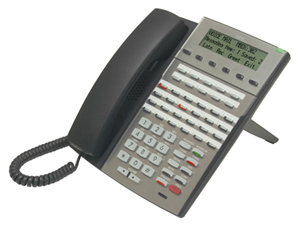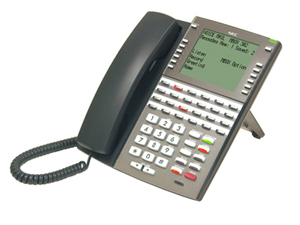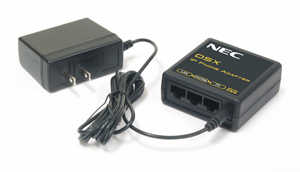Description
DSX IP Keysets
| There are two available DSX IP Keysets: the 34-Button Backlit Display IP Telephone with Full-Duplex Speakerphone and the 34-Button Backlit Super Display IP Telephone with Full-Duplex Speakerphone. | |
| 34-Button Backlit Display IP Telephone with Full-Duplex Speakerphone (P/N 1090034) |

|
| The 34-Button Display IP Telephone features a large 3 line- by-24 character backlit alphanumeric display with 4 Interactive Soft Keys for intuitive feature access. It also provides 10 Personal Speed Dial keys, 24 programmable Feature Keys and 12 fixed function keys for streamlined operation. Additionally, this telephone offers a backlit keypad, a headset jack, and built-in Full-Duplex Speakerphone. Unique features include dual LEDs, built-in wall mounting, and an innovative two position angle adjustment. | |
| The 34-Button Display IP Telephone has the same features and ease of use as the digital "TDM" model. | |
| 34-Button Backlit Super Display IP Telephone with Full-Duplex Speakerphone (P/N 1090035) |

|
| The Super Display IP Telephone features a large 9 line-by-24 character backlit alphanumeric display with 12 Interactive Soft Keys for intuitive feature access. It also provides 10 Personal Speed Dial keys, 24 programmable Feature Keys and 12 fixed function keys for streamlined operation. Additionally, this telephone offers a built-in Full-Duplex Speakerphone, a backlit keypad, and a headset jack. Unique features include dual LEDs, built-in wall mounting, and an innovative two position angle adjustment. | |
| The 34-Button Super Display IP Telephone has the same features and ease of use as the digital "TDM" model. | |
VoIP Installation
You can install a DSX IP Keyset on-premise in a managed network or as a remote IP extension. The DSX IP Keyset supports common CODECs (G.711A, G.729, and G.722) which let you easily balance voice quality with available bandwidth.
Setting up DSX Remote IP Keysets using NAT Traversal requires the purchase of a Linksys WRT54GL or WRT160NL router for each remote site. Additionally, port 5060 at the system-side router must be forwarded to the system IP address. Depending on your experience level, this may require the services of an IT professional.
If setting up DSX Remote IP Keysets using VPN (Virtual Private Network), it requires the purchase of third-party VPN routers and the services of an IT professional.
For a complete index of the available VoIP resources, click VoIP Extensions in the menu bar at the top of this page.
The DSX IP Keyset uses a single CAT5 ethernet cable to the desktop which connects to the compact, unobtrusive DSX IP Adaptor. The adaptor connects to the LAN, the IP keyset, and a PC, as well as provide the power required by the telephone. A separate power supply and cable are not required. If the router to which the keyset is connected is Power Over Ethernet (PoE 802.3af) compliant, the DSX IP Adaptor power supply is not required because telephone power can be provided by the router.
| DSX IP Adaptor (P/N 1091045) |
 |
Third Party SIP Extensions
Third party SIP extensions compliant with SIP VoIP RFC 3261 can be installed on-site or remotely. The SIP extension should provide all the features available at a single line telephone unless dial pad keys are "hijacked" by the SIP extension. For example, if a SIP extension uses * as a setup command, it won't be able to use Directed Call Pickup.
Emergency (911) Calls and Remote IP Extensions
When a remote IP extension user dials 911, the call routes to the 911 service for the location in which the main system is installed. The emergency call does not route to the 911 service for the remote location.
Common VoIP Terms
| Term | Description |
| NAT Traversal | Network Address Translation Traversal
|
| SOHO Router | Small Office Home Office Router
|
| VPN | Virtual Private Network
|